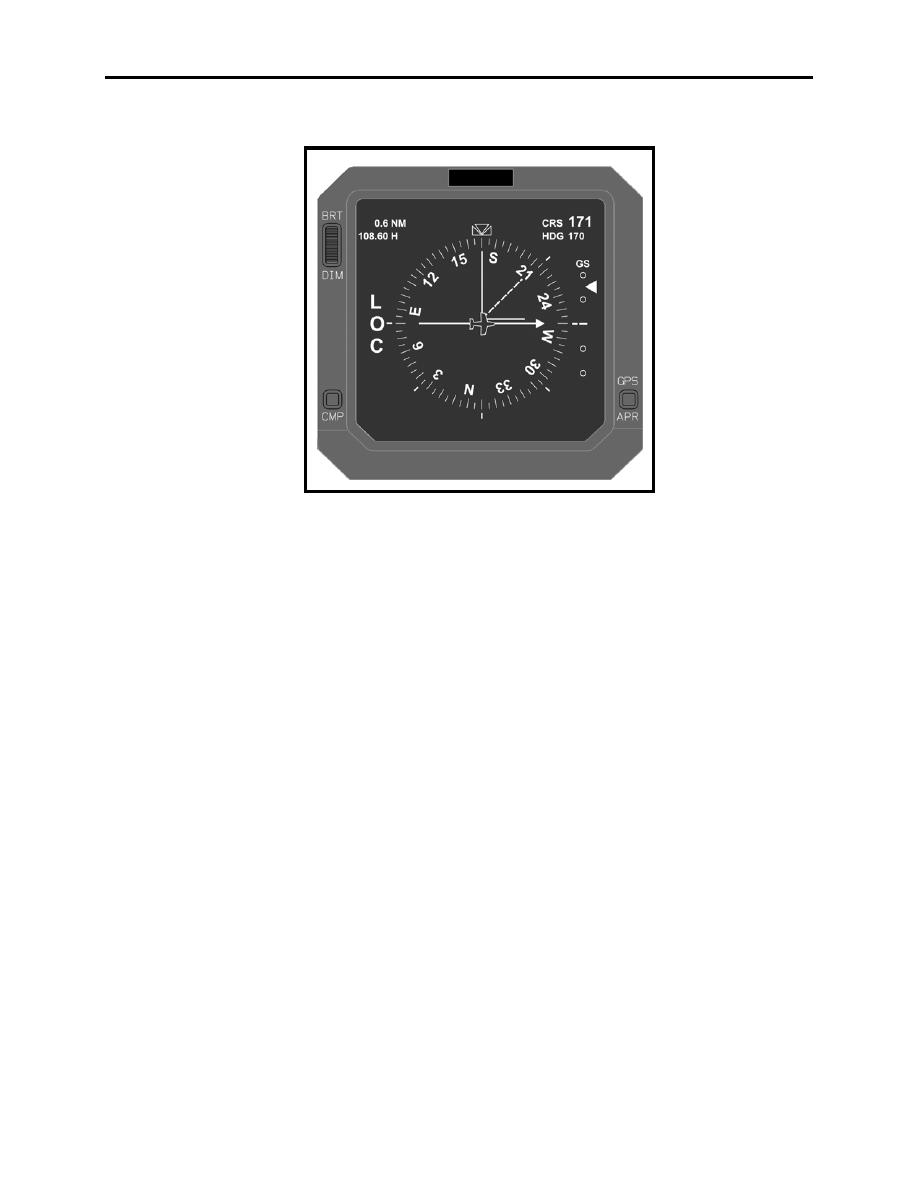 |
|||
|
|
|||
|
|
|||
| ||||||||||
|
|  T-6A NAVIGATION
CHAPTER FIVE
Figure 5-12 EHSI
You can use this method even when the two components are equal, and you must still estimate
the direction of the total wind from the relative magnitudes of its components. With practice
your estimate will be within 10 of the actual wind. The wind component chart in Figure 5-19
can be helpful in determining both wind components and total wind vectors.
Once we have determined our wind direction and velocity, it is a good technique to create a
picture of it by visualizing the wind on the EHSI. This can prevent gross errors in compensations
(crabbing the wrong way). The techniques used in Figures 5-15 and 5-16 combined with the
EHSI gives us this technique for determining wind. If the wind components are known and
"placed" on the EHSI, one can estimate the magnitude and direction of the wind by estimating
the relative lengths of the horizontal and vertical axis. Figure 5-17 shows a wind of 210 and 20
knots (dashed line) on the EHSI and the breakdown of the wind components. The outside of the
EHSI is equal to the total wind velocity. This technique can be used to generate a total wind
from known components or vice versa it can generate the components from a known total wind.
Another technique is to draw (in black ink) a wind "T" to help visualize the wind vector. This is
merely a cross drawn on your chart, oriented with the MC for the leg drawn and annotated
accordingly. As with any annotation, be sure it falls outside of 3 NM from the course line.
Figure 5-18 is an example of a wind "T." In flight, this provides a convenient place to write and
compute wind information. Be aware that recording to much information on your chart can be
distracting and prevent you from your primary duties of Fixing your position and Correcting back
to course. Don't forget that this wind estimation is only a portion of the total process.
FLIGHT PROCEDURES
5-27
|
|
Privacy Statement - Press Release - Copyright Information. - Contact Us |